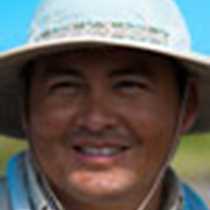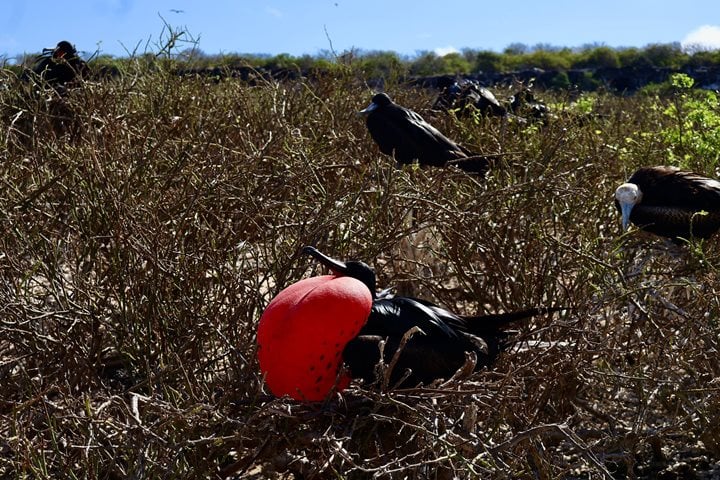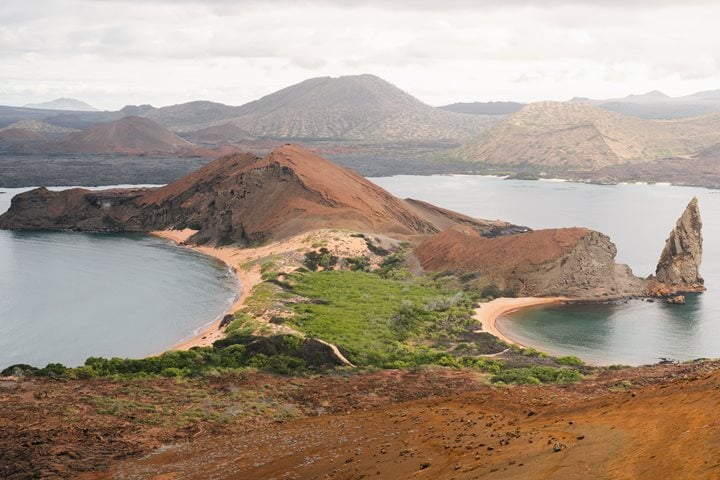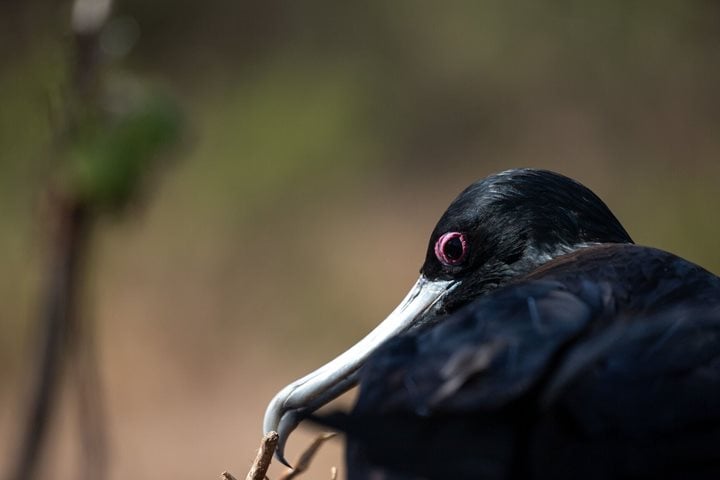Early this morning, our enthusiastic explorer photographers had the opportunity to explore an ancient caldera at Darwin’s Bay. As soon as we landed, several sea lions that were basking in the white sandy beach captured our attention. Swallow-tail gulls and lava gulls were also spotted throughout the scenic landscape of Genovesa Island. Nestled in the mangrove forest, we also spotted a unique variety of booby, called the red-footed booby, which is the only type of booby to nest in the trees. Along the beach, sea lions and shorebirds were amusing us with their playful behavior. Afterwards, some guests decided to relax on the beach, watching the sea lions and shorebirds that amused us with their playful behaviors. Others went out to explore the underwater realm, while some enjoyed close encounters with the wonders of Genovesa from kayaks.
Isolated on the northern hemisphere, Genovesa is considered the jewel of the crown of the Galapagos Islands. This unique place has a very fragile ecosystem, therefore it is very important the practice sustainable tourism. Later in the morning, our outing took place on Prince Phillip’s steps. From the top of the island, we observed the magnitude of the caldera of the ancient shield volcano. As we walked through a Palo Santo forest, Nazca boobies, mockingbirds, Galápagos doves and Darwin’s finches charmed us with their sounds and calls. The trail took us to an old rocky plain oxidized by the erosion. Since the Galapagos hawk is absent on this island, short-eared owls have adapted to become diurnals and prey on storm petrels, making them the top predator on this island. These petrels were extremely abundant on the ancient lava field, and we were fascinated by their interactions with the short-eared owl. The petrels fly during daytime to avoid predators, only returning to their nest holes at night. However, the camouflage of the diurnal short-eared owl blends perfectly with the brown rocks, allowing them to surprise and waylay petrels as they land on the field.
Our afternoon walk ended with some unexpected visitors as we returned to the landing site—Galapagos sharks and black-tipped reef sharks were spotted as our explorers were boarding the zodiacs. Our day ended with a sensational sunset that illuminated the rim of Genovesa Island.




.jpg?width=106&height=85&mode=crop&scale=both&quality=50)


